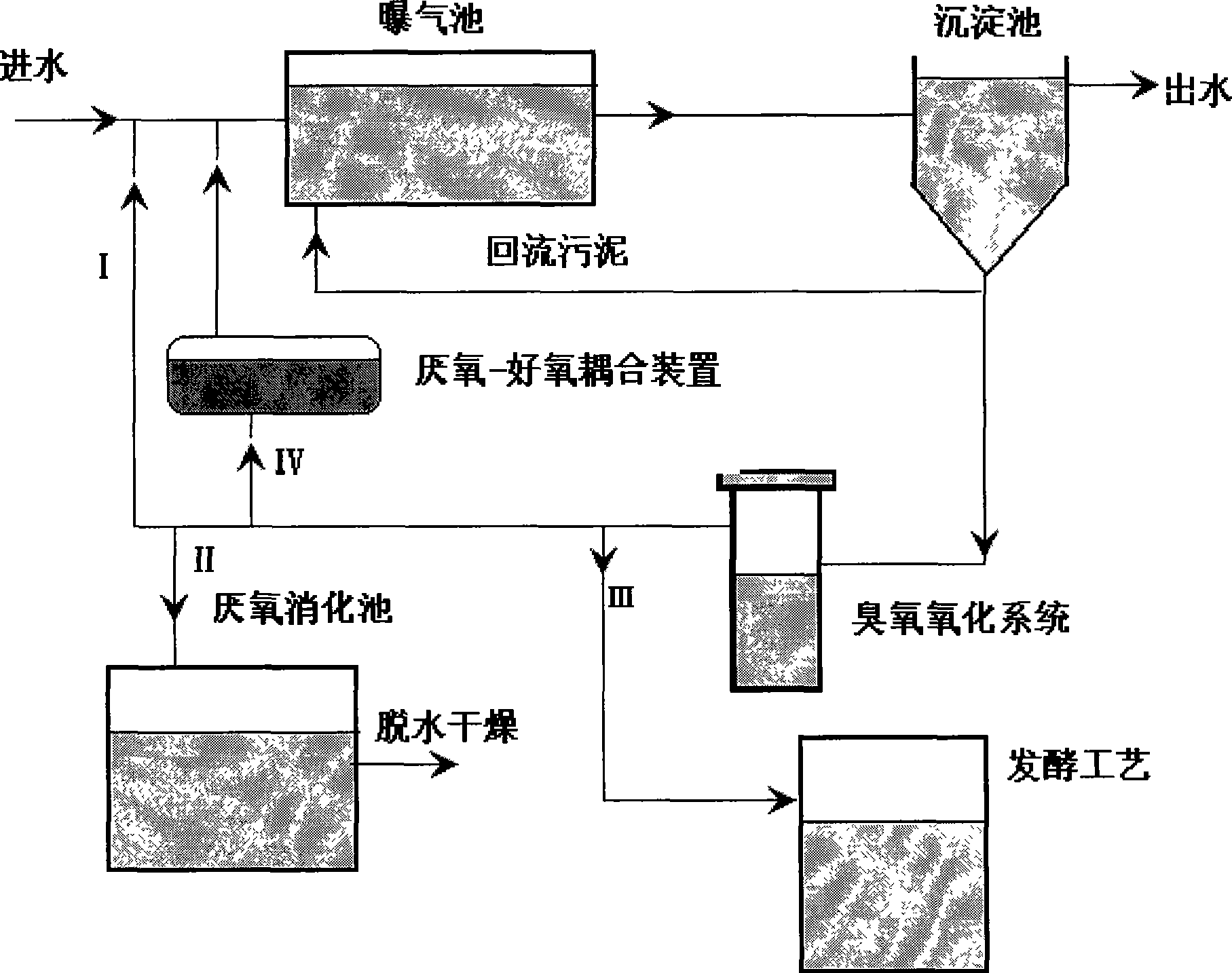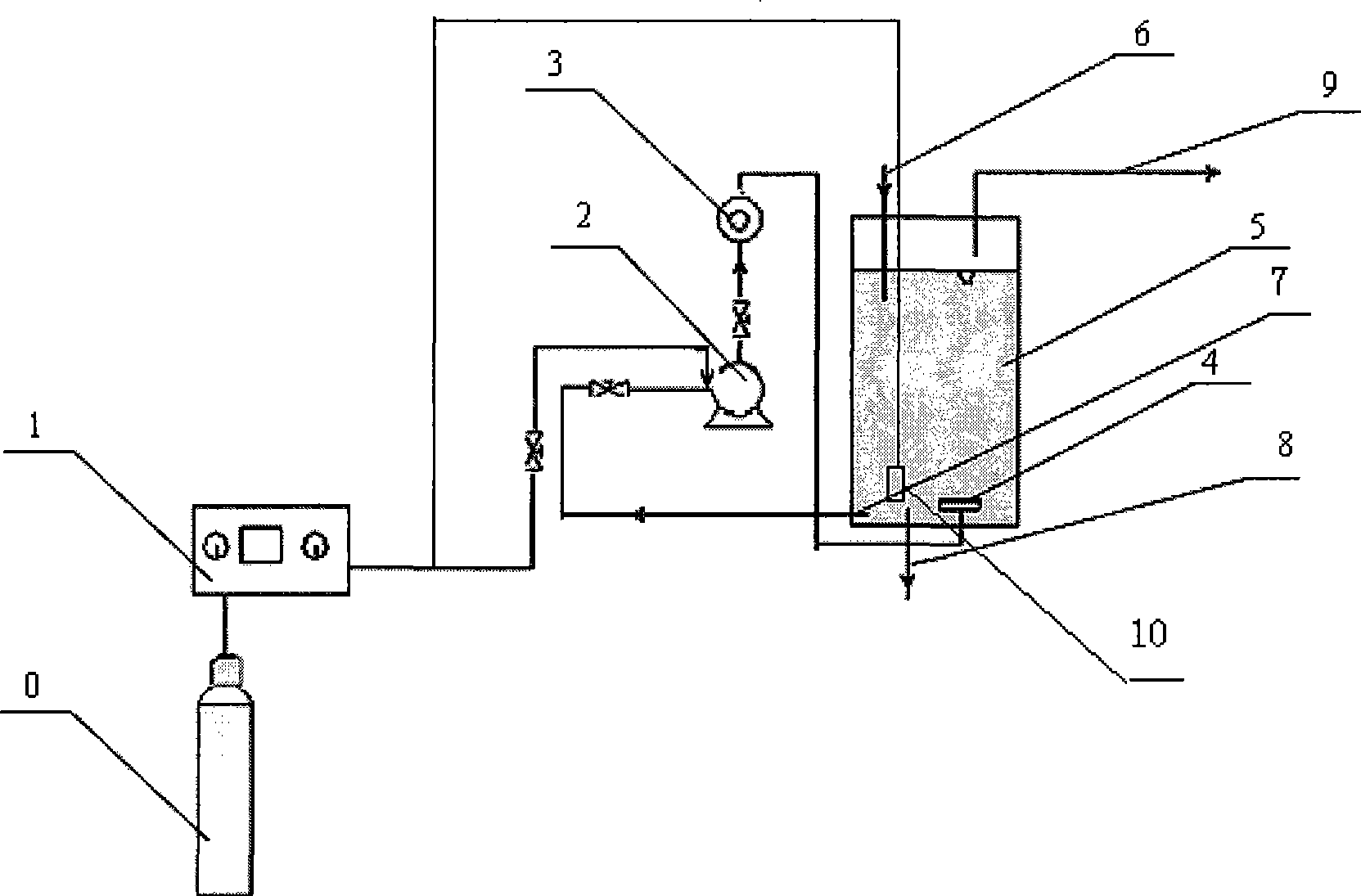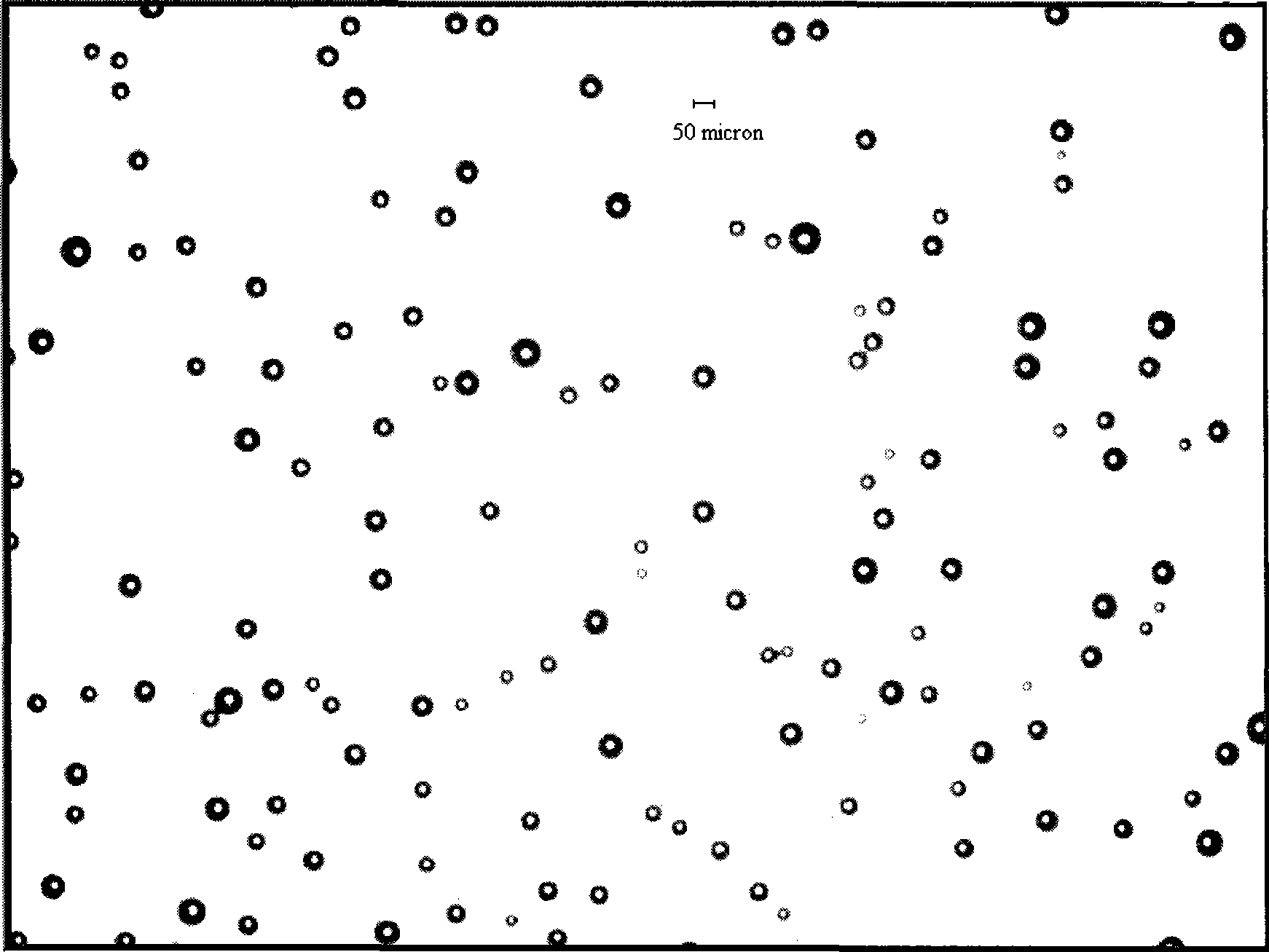Method for dissolving biological cell in sludge and use thereof
A biological cell and sludge technology, which is applied in the direction of oxidation treatment of sludge, can solve the problems of low ozone treatment sludge dissolution efficiency, poor ozone solubility and stability, and increased ozone dosage, so as to solve a large amount of residual sewage. Mud problem, realization of volume reduction, high internal pressure effect
- Summary
- Abstract
- Description
- Claims
- Application Information
AI Technical Summary
Problems solved by technology
Method used
Image
Examples
Embodiment 1
[0038] Embodiment 1, the method utilizing ozone microbubbles to dissolve biological cells in sludge
[0039] l. Ozone Micro Bubble Generator
[0040] Ozone microbubble generators, such as figure 2 As shown, it is mainly composed of an ozone generator 1 and a micron bubble generator. The micro-bubble generator is formed by connecting a water pump 2, a cyclotron 3 and a disperser 4 through pipelines.
[0041] The ozone micro-bubble generating device also includes an oxygen cylinder 0 containing oxygen, which is a raw material for producing ozone, and a reactor 5 providing a reaction space for sludge solution and ozone micro-bubbles. The reactor 5 has an input 6 and 3 outputs. The input port 6 is used to input the sludge solution into the reactor 5 . The output end 7 is used to input the sludge solution into the water pump 2, the output end 8 is used to discharge the dissolved sludge, and the output end 9 is a channel for exhaust gas.
[0042] The input end of the ozone gen...
Embodiment 2
[0080] Embodiment 2, the relationship between the COD dissolution rate of sludge and the solid dissolution rate and the amount of ozone added
[0081] The apparatus, experimental method and sludge solution used in this experiment are the same as in Example 1. Sludge solutions 1-a, 1-b, 1-c, 1-d, 1-e, 2-a and 2-b are treated with the micro-bubble system of Example 1, and passed into sludge solution 1-b` The common bubble system of Example 1 was used for the treatment.
[0082] Samples were taken to measure the total COD of the sludge solution, the COD of the supernatant, TSS and VSS and other indicators.
[0083] The dissolution rate of sludge is measured by COD dissolution rate (S COD ) and solid dissolution rate (S TSS ) to represent.
[0084] S COD =(COD p0 -COD p ) / COD p0
[0085] S TSS =(TSS 0 -TSS) / TSS 0
[0086] COD p Indicates the COD (mg / L) of the solid part in the sludge mixture, TSS indicates the total suspended solids concentration (mg / L), and the subs...
PUM
 Login to View More
Login to View More Abstract
Description
Claims
Application Information
 Login to View More
Login to View More - R&D
- Intellectual Property
- Life Sciences
- Materials
- Tech Scout
- Unparalleled Data Quality
- Higher Quality Content
- 60% Fewer Hallucinations
Browse by: Latest US Patents, China's latest patents, Technical Efficacy Thesaurus, Application Domain, Technology Topic, Popular Technical Reports.
© 2025 PatSnap. All rights reserved.Legal|Privacy policy|Modern Slavery Act Transparency Statement|Sitemap|About US| Contact US: help@patsnap.com



